Wear Facets on Teeth
11th Jun 2025

If you've noticed flat spots or shiny areas on your teeth, you might have wear facets. This common issue often happens from grinding teeth or having an uneven bite. Wear facets are small, worn-down spots on the biting surfaces of your teeth.
In this post, we'll explain what wear facets are, how they form, and how to treat and prevent them.
What Are Wear Facets on Teeth?
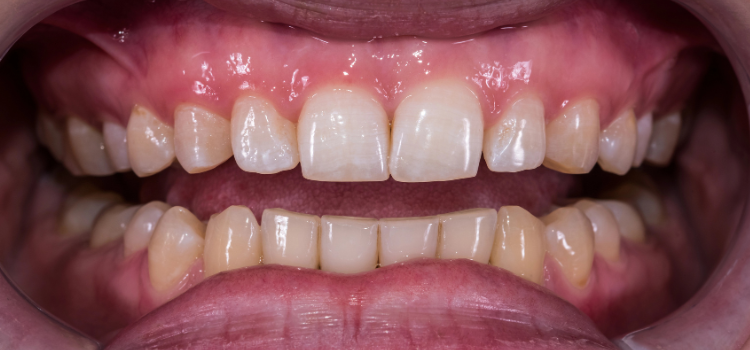
Wear facets are flat, shiny areas that develop on the biting surfaces of your teeth. They happen when teeth rub on one another over time because of friction or pressure, like when you grind or clench your teeth.
While some wear is natural as we age, wear facets are more noticeable when excessive pressure is placed on specific areas. This can cause your teeth to look shorter, shinier, or more worn than usual, which may indicate an issue with your oral habits or bite alignment.
Note: Wear facets don't always signal a serious problem, but they’re worth paying attention to. If left untreated, they can lead to tooth sensitivity or other dental issues.
Related Articles:
- Tooth Abrasion: Causes and Treatment
- Flat Teeth: Symptoms, Causes and Treatment
- Worn Down Teeth Causes and Treatment
Are Wear Facets Dangerous?
Wear facets aren’t always something to worry about right away. In some cases, they’re mostly a cosmetic concern, giving teeth a flattened or polished appearance. However, they can also be a sign of underlying issues like teeth grinding (bruxism) or an uneven bite, which may lead to more serious problems if left unaddressed.
As enamel wears down, teeth may become more sensitive, and in some cases, small cracks or chips can develop. While wear itself doesn’t cause cavities, it can thin the enamel, making teeth more vulnerable to decay. Uneven wear may also affect the alignment of the bite, potentially leading to jaw discomfort or TMJ-related symptoms.
Did you know? Anthropologists consider tooth wear a normal part of aging in ancient populations. Despite significant wear from coarse diets, many of these individuals maintained functional teeth throughout their lives.
How Do Wear Facets Form?
Wear facets develop when the surface of your teeth is repeatedly worn down.
Research shows that the degree and pattern of tooth wear vary depending on the abrasiveness of the diet and how teeth were used as tools.This can happen for a variety of reasons, some of which are more common than others.
Let’s take a look at what might be causing them:
Teeth Grinding (Bruxism)
Grinding your teeth, especially at night, is a common cause of wear on your teeth. This is known as bruxism. It can leave flat spots on your teeth, and if you wake up with a sore jaw or sensitive teeth, grinding might be to blame.
Misaligned Bite
If your teeth don’t line up properly, some areas may take more pressure, causing wear over time. This uneven pressure can lead to tooth damage.
Chewing Habits
Habits like chewing on pens, ice, or hard foods can put extra strain on your teeth, speeding up wear and tear.
Acidic Foods and Drinks
Acidic foods like citrus fruits and soda can weaken tooth enamel, making teeth more prone to wear. If combined with grinding, it can worsen the damage.
Age-Related Wear
As we age, it’s normal for teeth to wear down slowly. But if you grind your teeth or have other issues, the wear can become more noticeable.
How to Identify Wear Facets on Your Teeth

Knowing how to spot wear facets can help you take action early, preventing further damage. Here are some common signs that you might have wear facets on your teeth:
Flat or Polished Areas
Wear facets often show up as flat, shiny spots on your teeth. These areas may look smoother or more polished than the rest, especially up close.
Shorter Teeth
If your teeth seem shorter or more worn down, it could be due to wear facets. As enamel wears away, your teeth may become more flattened.
Sensitivity
Tooth sensitivity is a common sign of wear facets. If your teeth hurt from hot, cold, or pressure, the wear may be exposing the softer layer underneath the enamel.
Uneven Teeth
If some teeth look or feel more worn than others, it could indicate wear facets. This often happens with an uneven bite or teeth grinding at night.
Discomfort When Biting or Chewing
Wear facets can cause discomfort when biting or chewing, especially if they create uneven pressure points. If your teeth don’t fit together well, it may be time to see a dentist.
How to Prevent and Manage Wear Facets
Use a Night Guard
If you grind your teeth at night (bruxism), a night guard can help protect them from further wear. These custom-fitted guards act as a barrier, reducing the pressure on your teeth and preventing damage.
Correct Misalignment
If your teeth don’t align properly, see your dentist or orthodontist. They may recommend treatments like braces or other corrective options to help distribute pressure evenly and reduce wear.
Avoid Hard or Chewy Foods
Chewing on hard objects like pens or ice can damage your teeth. Try to avoid these habits and be cautious when eating tough or chewy foods to reduce the strain on your teeth.
Limit Acidic Foods and Drinks
Acidic foods and drinks can weaken enamel. Try to limit citrus fruits, soda, and acidic juices. If you do consume them, rinse your mouth with water afterward to protect your enamel.
Maintain Good Oral Hygiene
Brushing and flossing regularly helps protect your enamel from decay and damage. Use a soft-bristled toothbrush and avoid aggressive brushing to prevent additional wear.
Regular Dental Check-ups
Visiting your dentist regularly allows them to spot early signs of wear facets and address them before they cause significant damage. Early intervention can save your teeth and help keep them healthy.
Related Articles:
- Guide to Choosing the Right Night Guard
- How Should Your Teeth Rest?
- 5 Warning Signs You Need a Night Guard
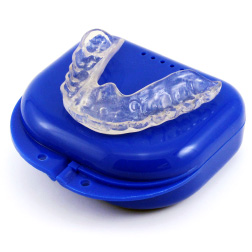
- Most Popular
- Hard Outside, Soft Inside
- 2MM Thick
- Moderate / Heavy
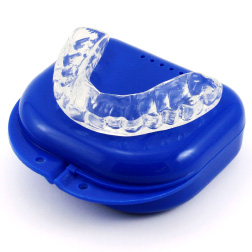
- Most Durable
- Hard Materials
- 1.5MM Thick
- Heavy / Severe
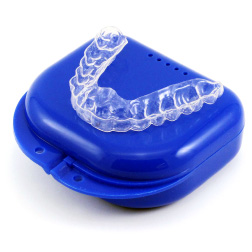
- For Day Time Use
- Thin, Barely Visible
- 1MM Thick
- Light / Moderate
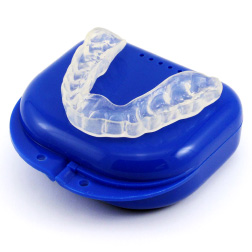
- For Clenching
- Flexible & Soft
- 1.5MM Thick
- Light / Moderate
Risks of Untreated Wear Facets
If wear facets aren’t treated, they can lead to more problems. As the enamel wears away, the soft part of your tooth underneath becomes exposed, causing increased sensitivity to hot, cold, or sweet foods. Over time, this can make eating and drinking uncomfortable. The damage can also weaken your teeth, making them more likely to get cavities or even break.
It’s important to see a dentist early if you notice wear facets. The sooner you get help, the less likely you are to face bigger issues later on. Treating wear facets early can help protect your teeth and keep your smile strong and healthy.
When to See a Dentist
If you notice increased tooth sensitivity, visible changes in tooth shape, or pain when biting or chewing, it's time to see a dentist. Uneven wear from wear facets can cause discomfort and affect your bite.
A dentist can assess the damage and recommend treatment, such as dental bonding or orthodontics, to restore your teeth and prevent further issues. Regular check-ups are essential to catch wear facets early and protect your smile.
Conclusion
Identifying wear facets early is key to protecting your dental health. Whether caused by grinding, acid erosion, or other factors, wear facets are treatable. Look for signs like sensitivity or changes in tooth shape to address the problem before it worsens.
A custom night guard from Pro Teeth Guard can help prevent further damage by protecting your teeth from grinding while you sleep. Your dentist can recommend the best treatment, and a night guard offers an easy way to preserve your smile.
References:
- Molnar, S. (1972). Tooth wear and culture: A survey of tooth functions among some prehistoric populations. Current Anthropology, 13(5), 511–526. https://doi.org/10.1086/201284
- Kaidonis, J. A. (2008). Tooth wear: The view of the anthropologist. Clinical Oral Investigations, 12(Suppl 1), S21–S26. https://doi.org/10.1007/s00784-007-0154-8

- Most Popular
- Hard Outside, Soft Inside
- 2MM Thick
- Moderate / Heavy

- Most Durable
- Hard Materials
- 1.5MM Thick
- Heavy / Severe

- For Day Time Use
- Thin, Barely Visible
- 1MM Thick
- Light / Moderate

- For Clenching
- Flexible & Soft
- 1.5MM Thick
- Light / Moderate
